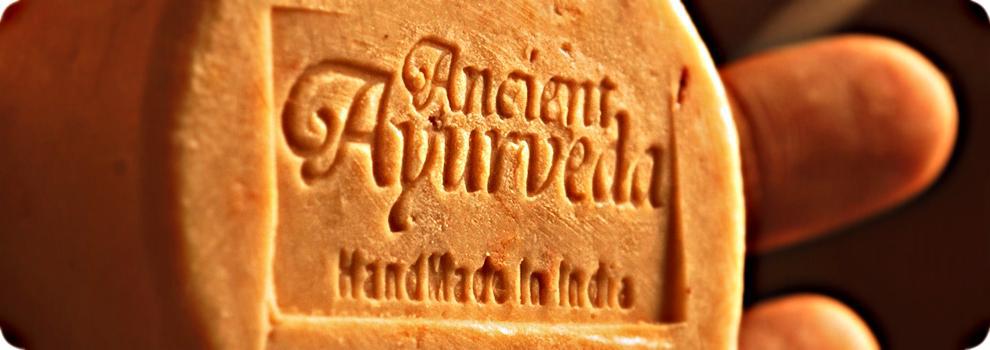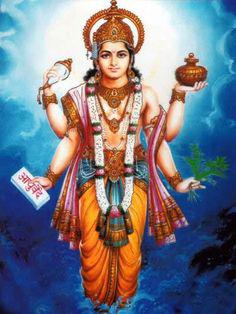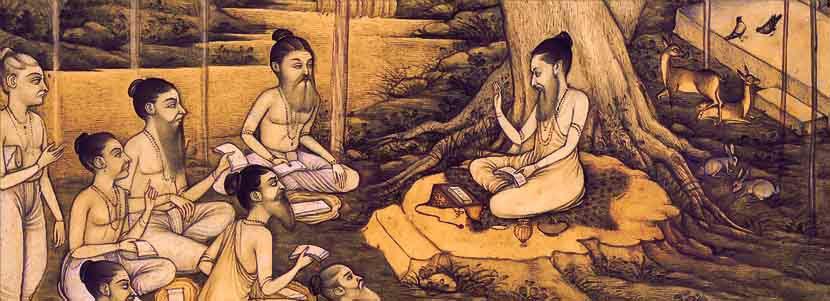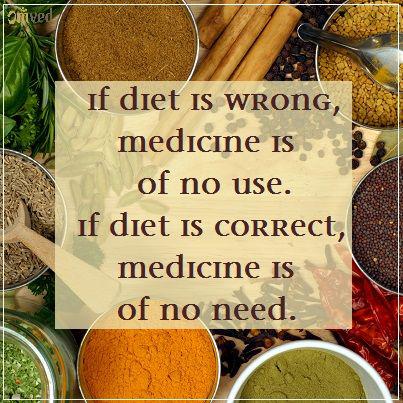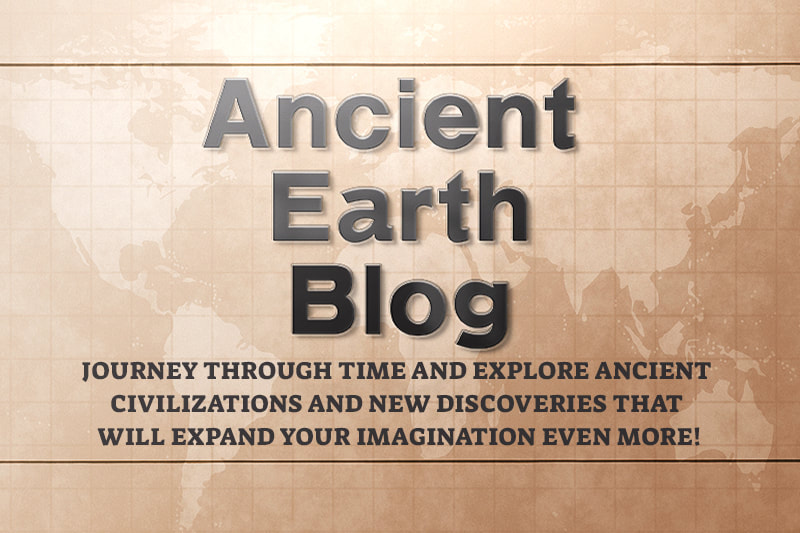|
written by: Amanda Johnson MYTHOLOGICAL ORIGINS OF AYURVEDA LORD DHANWANTARI FATHER OF AYURVEDA: Regarded as the origin of Indian medicine, Dhanwantari has many myths surrounding him. In Ancient Hindu mythology, the world had been flooded by an ocean of milk and the nectar of immortality had been lost. The continuing struggles between the Gods and Demons had made the Gods weak and tired from old age and disease, with no other choice they invited the Demons to help them in the churning of the cosmic ocean of milk, looking for the lost secret to health and longevity.
Dhanwantari was elevated to ‘Physician to the Gods’ and worshipped as ‘Lord of Medicine’ and is still regarded in India as the patron-god of all branches of medicine. DOCUMENTED HISTORY OF AYURVEDA The first documented history of Ayurveda begins in the time of the Vedas (books of knowledge). These are the four ancient Holy Books of the Aryans or “noble ones” and these are where mythology becomes philosophy. The four Vedas namely Rig Veda, Yajur Veda, Sama Veda and Arthava Veda were written approximately three to five thousand years ago and they all contain medical knowledge based on the principles of Ayurveda, but especially Arthava Veda. Around this time in ancient civilizations there existed ‘rishis and munis’, these were learned saints and sages whose sole purpose was to devote their existence in understanding the realities of the world. Their native home was Aryavarta, the land of the Aryans, which covers the Himalayas and surrounding areas, presently known as India, Nepal, Pakistan, Bhutan and Bangladesh. This ancient Aryan civilization was strongly influenced by the remarkable intellectual contributions of the saints and sages, who in their realization that sickness was a major factor in not being able to attain liberation, became physicians to help their people. The Sanskrit word for physician is Vaidaya, meaning wisdom. The historical record of Ayurveda begins with a medical conference in the Himalayas as described in the collection of medical writings called the Charaka Samhita. The author was a devoted student who talked of a large group of sages and saints who came together in the valley of the Himalayas to share and compile knowledge that had been passed down, mostly orally, from generation to generation within the different civilizations within the area. The participants engaged in long discussions and debates and formed committees to compile the full texts about the different subjects of Ayurveda. Two of the texts are still followed by today’s students when studying Ayurveda: the Charaka Samhita, the text of internal medicine and the Susruta Samhita, the text of surgery. Students learning about Ayurveda using the Guru-Shishya method, the passing of knowledge from guru to students via oral tradition WHAT IS AYURVEDA? Ayurveda is a Sanskrit word which means Ayur, life and Veda, knowledge….knowledge of life. It has its own style, art, tradition and rules of healing and believes more in disease prevention than in curing. The foundations of Ayurveda lie in physics and metaphysics. Basically, ‘the process of creation and the journey of consciousness as it evolves into matter” (Dr. Vasant Lad). The journey of conscious into matter here in space time, is called the third dimension. This dimension is composed of 5 fundamental elements – earth, water, fire, air and ether. Every living thing in this world, every manifest creation, is made up of these elements in varying proportions. Ayurveda calls these fundamental elements the ‘panchamahbutas’. We as humans are composed of a unique compilation of all 5 elements, in individual and different ratios. Known in Ayurveda as Vata, Pitta and Kapha, these individual ratios account for our difference in size, shape and behavior, our inborn nature if you like and, in theory, if the unique and naturally inborn nature is maintained, we will experience physical health, mental clarity and emotional harmony. However, in the modern world today, there are many obstacles that disrupts us and throws us off balance. Ayurveda concerns itself with restoring individuals to their ideal inborn ratios. Practices used in Ayurveda are vast as food, action, idea and feeling are analyzed. Wellness is not seen as a destination at which we arrive, it is an ongoing flow of fine tuning and adjustment. The real genius behind Ayurveda is the concept of proper diet and lifestyle choices. DIET ACCORDING TO AYURVEDA Ayurveda emphasizes that a diet must be properly selected and wisely formulated, not only according to our unique individual ratios – Vata, Pitta and Kapha, but also to our digestive strength. Our diet should also compliment seasonal and daily changes. In modern science food is classified according to their chemical composition- carbohydrates, proteins, fats, minerals, vitamins etc. In Ayurveda, classification is based on the biological action of food and its taste before, during and after digestion and the effect that it has on our digestive system. The Ayurvedic diet is about guiding rather than setting rules. Its main concern is about the balance of the meal and the inclusion of all the tastes - sour, sweet, salty, pungent, bitter and astringent. Food groupings contain different ratios of the 6 tastes, as well as being governed by certain qualities. In this way, Ayurveda understands how the body responds to our diet, provided that our food is chosen in accordance to our unique individual ratios. If we choose a food that is similar to our own qualities and take it in abundance, we will only succeed in increasing that particular quality within us, leading to an imbalance. The same can be said for not having enough of a certain quality, leading to its depletion. This maintenance of finely tuned balancing will extend to every organ and system in the body. ‘The only species that becomes nutritionally deficient is the human species, and we do so because we have completely lost touch with the inner wisdom of our bodies’ ~Ayurvedic proverb ~ anonymous THE 6 TASTES AND THEIR DEFINITIONS
As a system Ayurveda places emphasis on the maintenance of health as opposed to curing disease. As such, Ayurveda is now considered holistic in its philosophy and approach to living. In the world today it is attractive to many people and there are hundreds of options available to those who would like to know more. Please be aware that with popularity comes dilution, and the ‘business’ element takes over. Please research thoroughly into practitioners and physicians before embarking on expensive and sometimes unnecessary treatment plans. Ayurveda is an ancient art and tradition which has stood the test of time and deserves its respected place as the world’s first ever medical system.
0 Comments
Your comment will be posted after it is approved.
Leave a Reply. |
AuthorsWe welcome guest bloggers 5 more blogs to check out!
|
|

